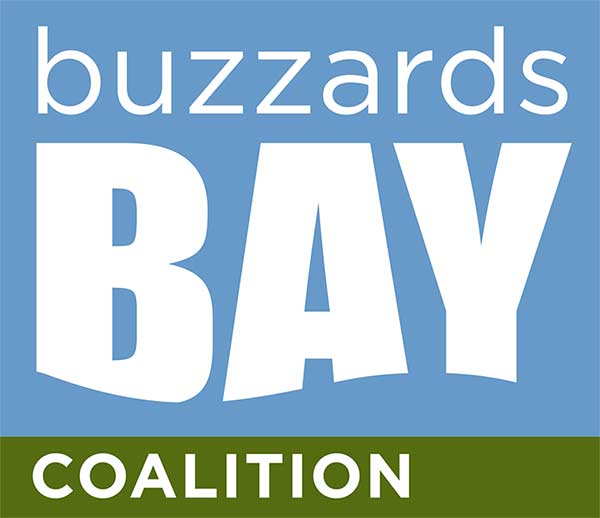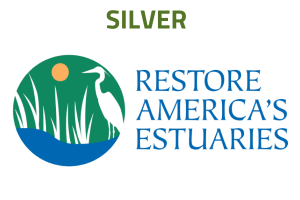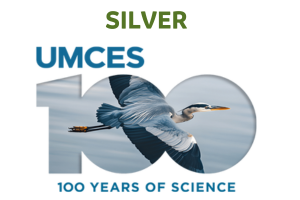- About
- Program
- Registration
- Experience
- Student & EC
- Hotel/Travel
- Sponsor/Exhibit
- Resources & More
CERF 2021 Scientific Award RecipientsJoin us in celebrating the 2021 CERF Scientific Award Recipients! The recipients of these awards embody the mission of CERF to advance understanding and wise stewardship of estuarine and coastal ecosystems worldwide by promoting research; supporting the education of scientists, decision-makers, and the public; and facilitating communication among these groups. To learn more about the Scientific Awards, please visit the Scientific Awards page.
Odum Award for Lifetime AchievementThe Odum Award is named for the three outstanding ecological scientists in the Odum family: Dr. Howard T. Odum; Dr. Eugene P. Odum; and Dr. William E. Odum, III. It honors an individual whose record of sustained accomplishments has made important contributions to our understanding of estuaries and coastal ecosystems.
The 2021 Odum Award Committee has selected Drs. Robert (JJ) Orth and Ken Heck as this year’s recipients of the Odum Award for Lifetime Achievement in Estuarine Sciences. The committee based this selection on the individual and joint achievements of this team of researchers in estuarine-coastal science. Our selection is also based on sustained accomplishments throughout their long and distinguished careers, contribution of seminal papers that have shaped estuarine-coastal science, and sustained engagement with and contributions to CERF. Their research has addressed basic questions that have advanced the fields of coastal and estuarine science in numerous ways, while also being highly relevant to coastal management and society. This was captured eloquently in the nomination letter, “both candidates have shaped our understanding of seagrasses and marine ecology—through a series of foundational papers, edited volumes, and synthetic reviews. Moreover, their science has had a lasting societal impact through their long and successful track record of integration with management and policy.” Together, they have authored nearly 500 publications, including 56 as co-authors, and published in high-impact journals such as Science, Proceedings of the National Academy of Sciences, BioScience, and Global Change Biology. They have each edited two books, numerous special issues, and contributed scores of conference proceedings and technical reports. Their work has been widely cited and is held in high regard in the academic community, particularly in the areas of marine science, ecology, and seagrass biology. Together, they have over 52,000 citations on Google Scholar, indicating lasting and sustained contributions over the years. In addition to their joint contributions, Drs. Heck and Orth have each established independent lines of research that have been equally impactful, and their work has been translated to management, conservation, and other applications. Their reviews and synthesis work have brought attention to the vulnerabilities of this ecologically important habitat to human stressors and climate change, global declines in seagrasses, and have raised awareness of the need for restoration efforts for seagrasses in the conservation world. In addition to their many research contributions, Drs. Orth and Heck have been generous in their many contributions to CERF and have been long-standing, highly engaged members. Dr. Orth has served CERF in numerous leadership positions including President, Past President, and Treasurer. Dr. Heck has also contributed generously to CERF as President-Elect, President, and Past-President, and has provided service to CERF publications as Associate Editor for Estuaries (1995-1998) and Reviews Editor for Estuaries and Coasts (2018-Present). In summary, the careers of Drs. Orth and Heck have been exemplary of the contributions that the Odum family made to estuarine sciences. This includes advancing the fields of estuarine and coastal science through research and scholarship as well as their strong records of mentoring students and postdocs. Together, their contributions have left an indelible mark on our field and they are eminently qualified and highly deserving of the 2021 Odum Award for Lifetime Achievements in Estuarine Sciences. Cronin Award – Early AchievementThis award recognizes the significant accomplishments of an estuarine scientist who is in the early stages of their career development. The recipient will have shown great promise with work carried out during the first six years past the PhD. Hamed Moftakhari 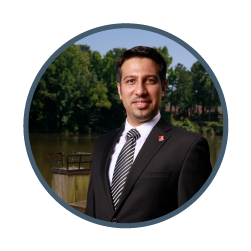
Dr. Hamed Moftakhari is an Assistant Professor at the University of Alabama in the Department of Civil, Construction, and Environmental Engineering. A Gulf Research Program Early Career Research Fellow with the National Academies of Science, Engineering and Medicine, Dr. Moftakhari is a highly productive and impactful researcher, making significant contributions to a range of topics from nuisance and compound flooding to multi-hazard assessment, cumulative hazards and coastal wetland response to sea level rise. Dr. Moftakhari’s trail-blazing research related to the cumulative effects of coastal and fluvial sources of flooding has highlighted that the compound effects of such interactive forces can pose levels of threat that far exceed those produced by each flooding source in isolation. Similarly, his research on the increasing prevalence of nuisance flooding related to sea level rise and the implications of such events on coastal communities and infrastructure is providing evidence urgently needed to shape management decisions regarding climate change in communities across the eastern and Gulf coasts of the US. As his career has advanced, Dr. Moftakhari has continued to not only expand the intellectual breadth of his research (e.g., with recent focus on drought and wetland resilience) but also increasingly translated his work to real-world applications. As an example, Dr. Moftakhari has served on the American Society of Civil Engineers sub-committee on Hydroclimatology and Engineering Adaptation and is actively involved in drafting a Manual for Practice on Compound Flooding in this role. He is also rapidly becoming a leader in the coastal resilience arena, as demonstrated by his convening of a special session on Natural Hazards and Coastal Hydrology at AGU meetings and leadership of a number of successful multi-disciplinary proposals. When viewed in sum, Dr. Moftakhari’s still young career is one that is already achieving significant intellectual and methodical contributions that are deepening our understanding of coastal processes and their transformations in response to climate and coastal change. William A. Niering Outstanding Educator AwardTo recognize the central role that education plays in achieving the objectives of our society, the Federation's Governing Board established an award named for a leader in estuarine education, Dr. William A. Niering. The Award is for an individual who has played a particularly important role in education at any level -- from primary school to the graduate level, inside or out of the classroom, or in the education of the general public through outreach activities. Katharyn Boyer 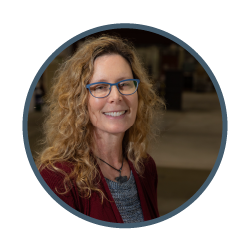
Dr. Katharyn Boyer, Professor of Biology at the Estuary & Ocean Science Center, San Francisco State University, has been a leader in student education in wetland and restoration ecology since 2004. Professional peers and students commented on her exemplary mentoring of young scientists who have taken her courses, and a commitment to fostering the development of historically-excluded students. Letters of support from past and current students repeated an overarching theme of Dr. Boyer’s support and dedication to her students. They describe her as “approachable,” “empathetic,” “inclusive,” and applaud her ability to “humanize science.” Students characterizing her kindness and ability to increase student confidence in their work aptly described it as “Kathy glow.” An example of Dr. Boyer’s major impact on students is her co-creation and directing of the Diving into Ecology and Evolution Program (DEEP)—a semester-long field immersion class first held in 2019 at the Hawaii Institute of Marine Biology and He‘eia National Estuarine Research Reserve—providing undergraduate students at her institution with hands-on experience and independent research in coastal habitats. Such programs, although demanding for the instructor, and in this case involving major fund-raising by Dr. Boyer for scholarships to promote inclusivity, can be transformative for students. It is also clear that Dr. Boyer has provided a welcoming and supportive environment for developing researchers. As a graduate student mentor, Dr. Boyer has an impressive record of graduating 22 master’s students, with seven more in progress; a majority of these students (24 of 29) are female. Mentoring of these students has resulted in many publishing their work and obtaining successful employment in coastal management or going on to PhD programs. Dr. Boyer has also contributed to the graduate committees of more than 35 other students. Beyond the classroom, peer nominators noted that Dr. Boyer was an excellent communicator who could translate scientific research on estuarine ecology into valuable information for coastal resource users. Over the last two years alone, she has delivered 10 talks to clubs, private organizations, and governmental organizations, including a talk for TEDxMarin. Overall, Dr. Boyer has an impressive record of achievement in both formal and informal education in estuarine and coastal science and is a highly deserving recipient of the William A. Niering Outstanding Educator Award. Pritchard Award – Physical Oceanography PaperThis award was established to honor Dr. Donald W. Pritchard, whose insightful research on the physical dynamics of coastal systems set the stage for much of the research in physical oceanography that is being conducted today. The Pritchard Award recognizes the author(s) of the best physical oceanography paper published in Estuaries and Coasts within the two-year interval between CERF conferences. Authors: Margaret A. McKeon Alexander R. Horner-Devine Sarah N. Giddings 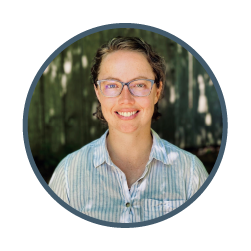
Paper: Seasonal changes in structure and dynamics in an urbanized salt wedge estuary, Estuaries and Coasts, 44(3), 589-607 McKeon et al. assess the response of a salt wedge in a highly engineered channel to variations in river flow and tidal forcing. They adjust two-layer hydraulic theory to account for a short estuary with a large bed slope, and use the theory to describe seasonal changes in stratification, salt-wedge length, and tidal variability in interfacial height. The theory predicts the observed flood/ebb asymmetry in the salt wedge’s structure and its modulation by river discharge. During flood tide, both theory and observation show that the interface height is independent of river discharge, while on ebb the interface height decreases with river discharge. The flood/ebb asymmetry in salt wedge structure and circulation is modulated by the seasonally varying river discharge, which they hypothesize leads to a seasonally modulated residual circulation. Moreover, these results show that changes to channel geometry, and in particular bed-slope, influences the estuarine circulation and salt wedge dynamics. They demonstrate that as bed slope steepens, the salt intrusion length becomes less sensitive to river discharge. Salt wedges, or gravity currents, are ubiquitous phenomena in geophysical flows and the theory McKeon et al. developed will have broad applicability beyond estuaries. Moreover, the application of this theory to estuarine flows will have broad implications not only to estuarine physics but also to other important estuarine processes that determine, for example, sediment transport, contaminant transport, and water quality. Margaret A. Davidson Award – StewardshipThis award was established to honor Margaret A. Davidson's distinguished career in coastal resource management and her support of the application of science to the wise stewardship of estuaries and coasts. The Davidson award recognizes an individual that demonstrates extraordinary leadership, service, innovation, and commitment to the management of estuarine and coastal systems. Other CERF awards focus on research and education excellence; this award will recognize those who have worked in the estuarine and coastal arena and excelled in management and policy. Christine Baumann Feurt 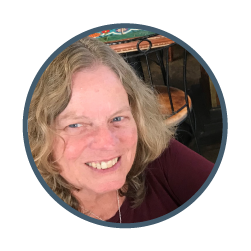
Dr. Chris Feurt is a visionary social scientist who has helped to integrate the human dimensions into coastal management. She developed the Coastal Training Program at the Wells NERR in 2002 and demonstrates a strong commitment to bringing scientists, practitioners and community members together to protect the qualities of coasts and estuaries that they value. Dr. Feurt brings expertise in stakeholder engagement, training design, collaborative learning, and environmental communication, and is a national leader in the NERR network. Working with her Coastal Training Program colleagues, she developed the Resilience Dialogues Curriculum of best practices for stakeholder engagement in collaborative science. In addition to countless trainings, she has also developed the Collaborative Learning Guide for Ecosystem Management focused on engaging diverse audiences to address stewardship concerns. Dr. Feurt has put this guidance into action, leading multiple projects directed at community engagement in watershed protection: she facilitated the formation of the Salmon Falls Watershed Collaborative, which received the US Water Prize in 2012 from the US Water Alliance; and she was a co-PI on an NSF project in the Saco River estuary that has since expanded into a watershed-wide initiative. For twenty years, Dr. Feurt also served as a part-time faculty member in the Department of Environmental Studies at the University of New England, where she worked as the Director of the Center for Sustainable Communities. She is currently a Research Associate with UNE’s School of Marine and Environmental Programs. What comes through in her letters is that Dr. Feurt leads by example, and that she excels at bringing people together. As stated in her nomination letter, “Everyone (and I do mean everyone!) she has worked with over the years has had huge respect for Dr. Feurt’s knowledge, manner, and approach to her work.” For these reasons, we award Christine Feurt the Margaret A. Davidson award. Coastal Stewardship Award (Organization)CERF established the Coastal Stewardship Award to honor notable achievements in promoting the wise management of estuarine and coastal systems. This award recognizes specific projects, programs, and organizations for their exemplary stewardship activities, including success in management, policy, restoration, and conservation efforts. CERF appreciates the multiple scales at which impacts may be achieved; accordingly, the Coastal Stewardship Awards are occasional awards and may represent a hierarchy of recognition at CERF biennial conferences. If given, one or more awards of recognition could be presented biennially in association with the CERF conferences, beginning in 2017. Buzzards Bay Coalition
Estuarine and Coastal Science: In 1992, the Coalition launched the Baywatchers volunteer-based water quality monitoring program, with Baywatchers sampling more than 250 stations across 50 bays, rivers, and coastal ponds each summer three decades later. The Coalition’s "innovative alternative" denitrifying septic systems program provides homeowners with incentives to upgrade their standard septic systems and monitors the actual nitrogen removal by the installed systems. The Coalition also has current projects to improve watershed model estimates of nitrogen contributions from cranberry farms, prioritize farms with high nitrogen outputs for restoration to wetlands, and quantify water and nitrogen fluxes at the mouths of the rivers with the highest acreage of cranberry farmland. Land Protection: The Coalition started purchasing land two decades ago, and now owns about 1,235 acres and holds conservation restrictions for or was a major partner in efforts that protect another 9,000 acres. Ecological Restoration: The Coalition bought an industrial brownfield site that was a former sawmill and restored the property by lowering the former dam, improving fish passage, restoring habitat, and creating accessible trails. Education and Recreation: The Coalition developed a new “Discover Buzzards Bay” website that highlights preserves and open spaces; hired a staff to lead walks and other activities; and created two signature events, a 100-mile Buzzards Bay Bicycle Ride and a 1.5-mile Buzzards Swim, that draw hundreds of participants and raise tens of thousands of dollars each year. These are just some of the examples of the level of priority given to education and recreation by the Coalition. This breadth and depth of its programs and progress makes the Buzzards Bay Coalition an exemplary steward of coastal resources and very effective organization. Diversity, Equity, Inclusion, and Justice AwardThis award recognizes the significant contributions of an individual who has worked for greater diversity, equity, inclusion, and justice in estuarine and coastal science, management, education, and/or stewardship. It honors a person who demonstrates exceptional long-term or emerging leadership and commitment to positive change. Ashanti Johnson 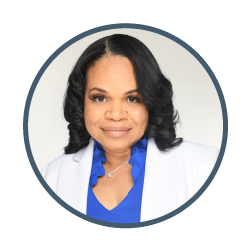
The inaugural Diversity, Equity, Inclusion, and Justice award recipient is Dr. Ashanti Johnson. Ashanti’s long record of achievements speaks volumes about what dedication, determination, and drive can accomplish for creating and supporting diversity, equity, justice, and inclusion over the course of a career. From her time as a research scientist and professor, to her current role as a motivational speaker and CEO of STEM Human Resource Development, Inc., Ashanti has touched the lives of many as a mentor, professor, and colleague. Ashanti has demonstrated outstanding leadership and support in the areas of justice, equity, diversity, and inclusion as well as active involvement in many groups that foster and promote diversity while advancing the STEM fields in which she remains active. In addition to her formidable productivity in science, she has an extensive body of publications and grants focused on issues around diversity and inclusion, has developed numerous programs that have served to increase diversity in STEM (e.g., Ocean sCientist Educator pArtnerships eNhancing Science, Florida-Georgia LSAMP Bridge to the Doctorate Project, and the MS PHD'S in Earth System Science Professional Development Program), and has received the Presidential Award for Excellence in Science, Mathematics, and Engineering Mentoring. Her mentorship has created a safe space and dynamic partnership for many early career scientists as well as inspiring career mentors. Ashanti has worked with CERF through the Rising TIDES program since its inception in 2017, and was a valued part of that inaugural group. Distinguished Service AwardThe Distinguished Service Award recipient is selected by the CERF President for their exceptional volunteer service to the Federation. Hilary Neckles 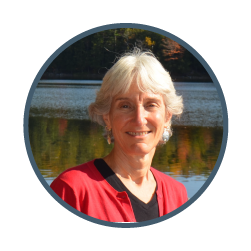
Dr. Hilary Neckles is the recipient of the 2021 CERF Distinguished service award. Beginning as a graduate student, Dr. Neckles has been active in her affiliate societies, ERF and now CERF. Dr. Neckles’ career has led her to reside in different coastal regions, and in each place she was active in the regional affiliate estuarine research society. She is a leader in her current affiliate society, NEERS. She was the program chair from 2004 to 2014 and was given honorary member status in the fall of 2014 for her outstanding service. She is also the recipient of the NEERS Stickleback Award, given to the meeting attendee that distinguishes themselves by dancing until the end of the music on Friday night, attending the first presentation the next morning, and providing exemplary service to NEERS! Seven years ago, when she was asked to run for the presidency and take on the serious responsibility of guiding CERF, she was more than willing because of the great sense of community she felt for the Federation. Over the last six years, she has had a remarkable and impactful run as CERF President-Elect, President, and now Past President. Over this period, she has played a major role in planning, implementing, and assessing just about every aspect of CERF’s activities, and her inclusive and communicative leadership style has recruited many news faces to CERF leadership and made all feel their viewpoints and voices counted! As President-Elect, Dr. Neckles helped lead the development of CERF’s current 2017-2022 strategic plan, Visions IV. In that process, she was instrumental in establishing the diversity, equity, and inclusion focus of the plan. From that work emerged CERF’s Rising TIDES (Toward an Inclusive, Diverse, and Enriched Society) comprehensive program. She also focused on performance measures that could be used to assess progress towards the goals in the strategic plan. As President, she focused the effort of the CERF Governing Board to bring greater value to CERF members and to implement the Visions IV plan. She was one of the leaders of the team that brought the NSF grant to establish our very successful Rising TIDES Conference Program. She created the Broadening Participation Council of the Governing Board and tasked the Council with examining all CERF operations through that lens. She also led development of new policies and programs to raise awareness, define expectations, and establish accountability surrounding sexual harassment. CERF’s Event Code of Conduct, Safe and Welcoming Plan, and updated Code of Ethics now work together to promote environments that are free from harassment and discrimination and are intentionally inclusive to LGBTQ+ people. Of course, during this time, she also served as the leader of the Governing Board, and her style built a sense of agency and inclusion for all board members. When she became Past President, she did not noticeably decrease her commitment to CERF. She continued working on issues relating to ethics, diversity, justice, and inclusion. She also pushed for the creation of CERF’s first Community of Practice in SAV monitoring and mapping as a way to add new activities to CERF that would serve the interests of our members. And she has continued to lead by example and inspire me as President. Many is the time that, as I was wondering the proper way to approach discussions and decisions necessary for CERF, I would ask myself “what would Hilary do?” CERF is better because of Dr. Neckles’ distinguished service. And there is no reason to think that her service is done! While she is stepping down after a six-year run of the presidency, I am quite sure the affection she has for CERF will likely keep her involved in helping CERF fulfill its mission for quite some time to come! |
||||||||||||||||||||||||||||||||||||||||||||||||



